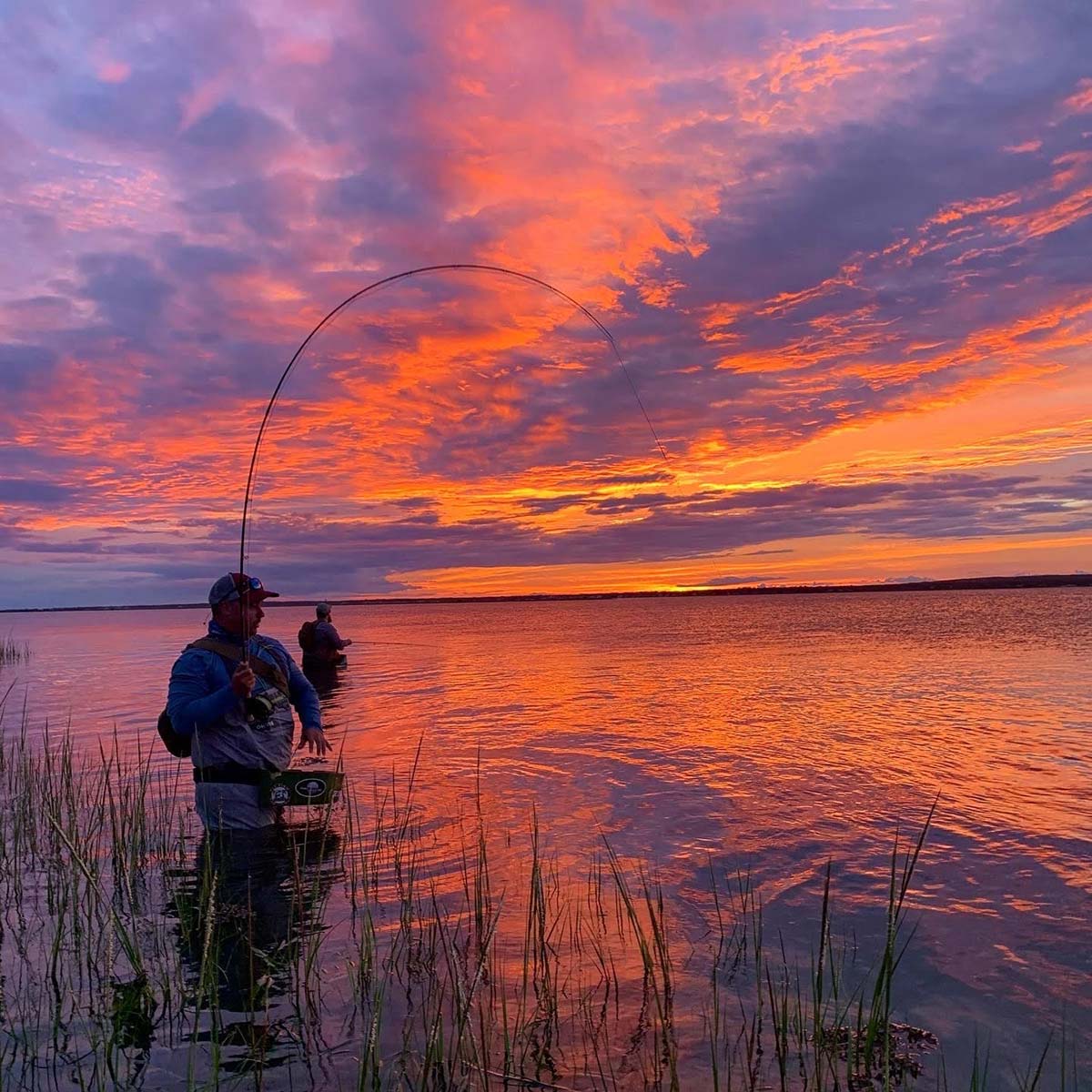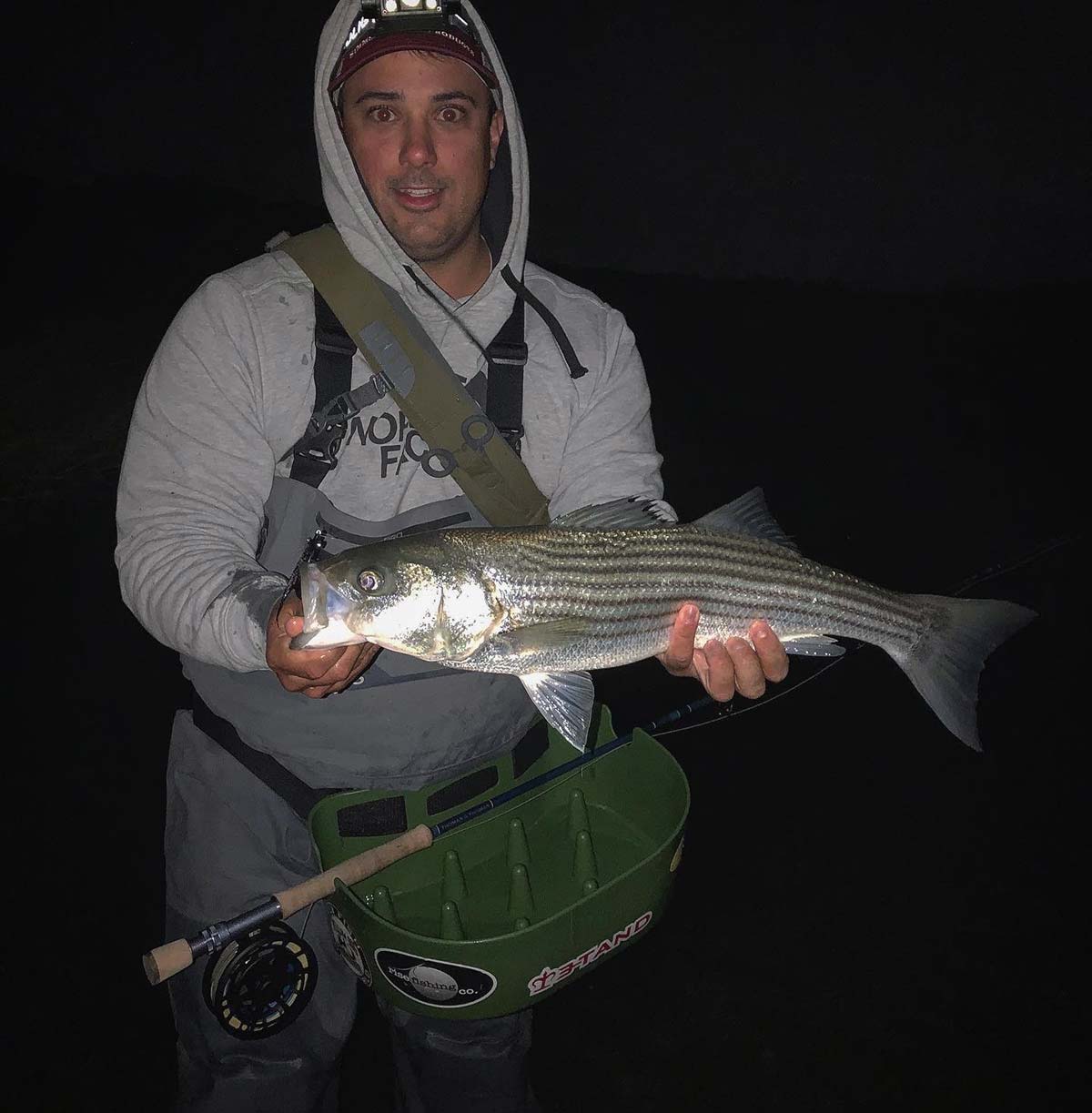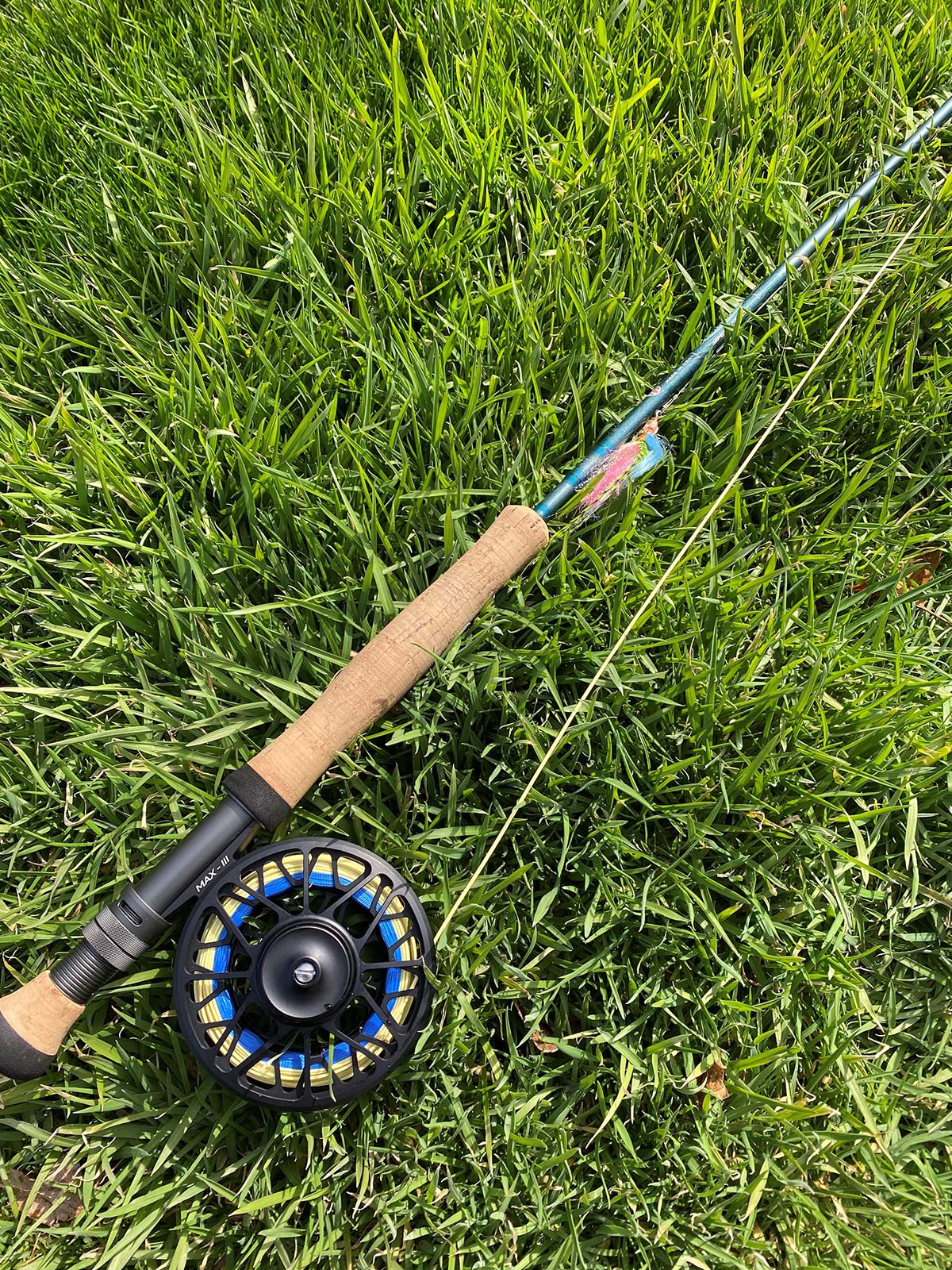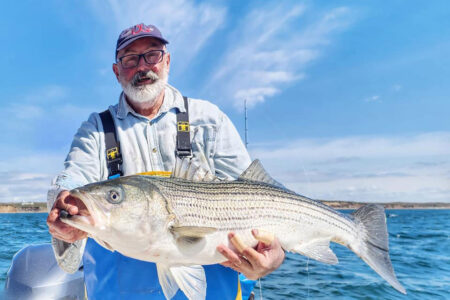
Try fly fishing for stripers this spring!
This time of year sets up the perfect opportunity to get one of my favorite fish on the fly, the one and only striped bass! They have quickly become one of my favorite species to target on the fly and an excellent opportunity to target these fish while they’re on the move and feeding. Growing up a surfcaster and traditional gear angler, I always had the notion that you had to catch these fish with big rods, heavy jigs, or plugs and work all hours of the night on an inlet or open beach to succeed. But fly fishing has turned what I thought I knew about striped bass entirely upside down.
I found myself very intimidated at first, wanting to try targeting striped bass on the fly. Knowing what I knew, I thought, there’s no way I can reach these fish with my casting being so limited. I knew of a back bay flat spot where most of the fish I would catch were within 30 to 40 feet of the shore, and I knew I could make it work. At the beginning of the spring, I brought my fly rod to that flat where I caught my first striped bass on the fly, and from there on, I knew this was how I would chase these fish in the future.
For me, fly fishing is more about the experience and places it takes you than just the fishing. Sure, like all anglers, I don’t go out looking not to catch any fish, but that’s 50 percent of it for me. The other 50 percent is where I am fishing—striped bass live in such diverse environments, you can catch them everywhere. You can find them on back bay flats harassing small peanut bunker or spearing; you can find them in deep rips offshore, gorging themselves on herring and bunker or right on the beach as they inhale clouds of sand eels. That’s what makes this fish unique and easy to target on the fly rod. The fish are usually much closer to shore, so if you’re wade fishing, you can easily hit them within casting range on the fly rod, or if you’re on a boat you can easily find schools of blitzing fish to drop a fly into. I will break down my approach and the gear I use for each situation to better help you target these great fish on the fly.

Hit The Flats
One of my favorite settings to fish has to be the flats. I would say 80 to 90 percent of my time is dedicated to this location. Though the fish are not always the largest, you can usually find schools of small to mid-sized bass harassing spearing and peanut bunker, making for a steady bite and great topwater action! When targeting fish in back bays, you always want to start by looking for structure, and like everywhere else, striped bass do set up on structure and eat bait as they fall mercy to the current. Daytime can be tough to find a steady pick of fish, but you can wade the flats and sight fish for them as they cruise skinny water hunting small baitfish and crabs.
As always, nighttime is the right time; I would say I fish almost exclusively at night or low light settings like sunrise and sunset. Under the cover of night, you can find schools of these fish aggressively attacking bait as it’s sucked in or out by the tide; this is when you can usually find a steady pick of fish and can find the bigger fish that are reluctant to feed during the day. When fishing at night, it’s extra important to remember that silhouette is key. I typically don’t retrieve my fly in when I fish at night. I will typically cast it out and allow the current to pull the fly line and let the fly swing dead in the current. This will keep the fly near the surface, allowing the fish to look up at it to see the silhouette of a perfect imitation for a wounded or dead baitfish that is being swept away with the current. Typically aggressive schoolies won’t pass up an easy opportunity like this!
Now for gear in back bay flats, I would recommend a 9-foot rod to start—that’s always the standard and will cover all your bases. You can go lighter, but I would recommend using a 7 or 8 weight depending on where you are fishing. Keep in mind Long Island tends to be a windy place so a 7 weight may be challenging to cut the wind, and an 8 weight would be ideal for these back bay spots. As far as lines go, a floating line is suitable for starting. If you want to have the luxury of carrying an extra spool or reel with you, the best scenario would be having a floater and an intermediate line. Unfortunately, taking this spare spool isn’t always practical, so if you were to have one line to use, I would say go floating. I was told, “You can always make a line sink, but you can’t make a sinking line float.” So, with that information, having a floater is more versatile, plus I think the floater at night is more productive since it helps keep the fly high in the column for the fish to see; I have had nights where the fish would only take flies right on or in the surface and wouldn’t look at anything underneath. I like to use a 9 to 10-foot length of tapered material down to 20 pound for my leader.

Work The Sand
Open beaches can be a bit trickier than working calm back bays. Typically on open beaches, you have more wind to deal with, plus unless you’re fishing a glass calm day, you’ll have to adjust your cast timing to deal with the sweep of the waves. The open beaches can be a highly productive place for getting bass on the fly, especially when there are a lot of sand eels in the surf. When you have sand eels, the fish will typically be pushed right up to the beach lip, so distance is not an issue, and any small thin fly working slowly near the bottom should induce a strike. When there isn’t much sign of life, or you’re working a new piece of beach, and you’re looking to find fish, you must go back to the most essential part of the puzzle—you have to find the structure! Like always, you find the structure and you’ll usually find the fish. Being a fly angler, you have some limitations—the biggest is distance. On an open beach, sometimes you may not be able to reach the structure that’s far off the shore, which can be unfortunate.
| FLY SHOPS |
| Fortunately living on Long Island, we have a lot of resources at our disposal for gear and getting advice on what to get. If you’re in Nassau County you have River Bay Outfitters in Baldwin. Paul who owns the shop has some incredible knowledge when it comes to fishing for striped bass with a fly and can point you in the right direction on what rod, reel and line to get based on where you plan to fish. If you’re on the East End, a great shop is White Water Outfitters in Hampton Bays. Jeff is an excellent fly angler and is a great resource of knowledge when it comes to fishing with a fly rod. If you live mid-island, take a ride down to The Campsite and see Carmine for some fly fishing tutelage along with a great selection of gear too. All these shows will be more than happy to get you started in your journey of fly fishing on Long Island. |
| River Bay Outfitters: (516) 415-7748 |
| White Water Outfitters: (631) 594-3336 |
| The Campsite: (631) 271-4969 |
Now with every disadvantage, I like to say we gain two advantages. The analogy I always use with fly fishing is that it’s like driving a manual car—you just have a lot more control over what you’re doing and how you present the fly. As a fly angler, you dictate how fast that fly comes in, so if those fish want it slow and low, you can drag that fly on the bottom much longer than someone who has a plug or a bucktail they’re working back, the other advantage is the size of the fly. Since the line is what carries the fly, we can throw much smaller flies than if you were to throw a spinning rod (for the most part), and when you have picky fish that are keyed in on small bait, it’s very easy to get them to take the fly. I’ve had days where everyone who was using spinning gear wasn’t getting a touch, but I would be hitting fish every cast since they were on small bait, and I could throw a much smaller profile with a fly. With the open beach, it does pose its challenges but remember, an angler in New Jersey three years ago caught a 50-pound striper on the fly while fishing the open beach, so it’s possible to land a big striper under these conditions.
As far as gear goes for open beaches, you can go in a few directions. The standard 9-foot rod will work just fine. A 10-foot rod would probably be ideal, but I would say you don’t lose many advantages having a 9-foot rod. You will want to go with a 9 weight or a 10 weight for the open beach. Conditions on the open beach can be much more intense, so the heavier line will help cut that wind and allow you to be able to get the line out as far as you can; even though you won’t always need to go the distance, there will be times you’re going to want to. As far as line goes, an intermediate sinking line would be best. You’re going to want your line riding under the waves so that it keeps the fly close to the bottom. My leader on the beach tends to be shorter in the 6 to 7-foot length with a taper down to 20 pound again. The last item that is an absolute necessity is a stripping basket—this is non-negotiable. When you’re walking the beach and trying to throw 60 to 80-feet of line, it can be a huge mess if it’s laying down on the beach or getting pulled in by waves. Having a basket will help a lot with managing the line. The last thing you want is to hook into a fish of a lifetime and lose it because the line wrapped all around your feet and caused a break-off.



